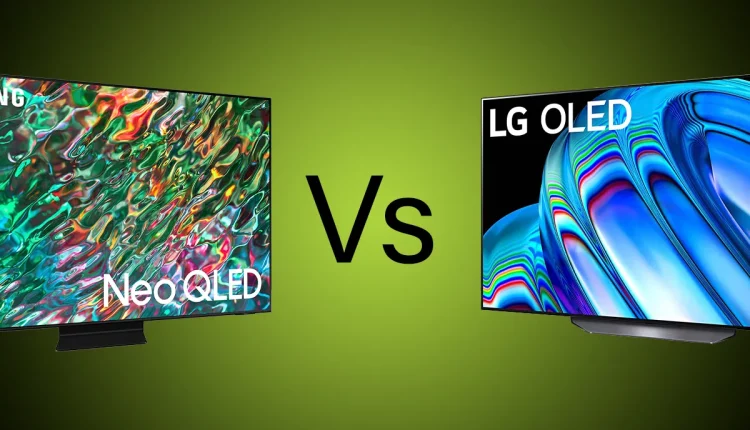©2021 Reporters Post24. All Rights Reserved.
The television and monitor markets are replete with various types of display technologies, each with its unique features, strengths, and weaknesses. 4K, OLED, and QLED are three terms that frequently emerge in discussions around high-quality displays. Understanding the difference between them is crucial for consumers looking to make an informed purchase. This article will dissect the technical aspects and user considerations tied to each of these display types, providing a comprehensive comparison.
Definitions:
– 4K: Refers to a resolution standard that indicates a horizontal display resolution of approximately 4,000 pixels. It is often equated with Ultra High Definition (UHD), which has a resolution of 3840 x 2160 pixels.
– OLED: Stands for Organic Light-Emitting Diode. In OLED displays, each pixel is made of a material that glows when it receives an electric current, eliminating the need for a backlight. This allows for true blacks since individual pixels can be turned off completely.
– QLED: Short for Quantum-dot Light-Emitting Diode. This technology enhances LED displays by using a quantum dot film between the LED backlight and the LCD layer, allowing for improved colors and brightness.
4K: A Resolution Revolution
4K technology provides a significant increase in picture clarity over its predecessor, 1080p, quadrupling the number of pixels. Many new televisions and monitors come with 4K resolution, ensuring that images are crisper and more detailed. However, 4K refers only to resolution and not the actual quality of the display panel or backlighting technology.
OLED: Deep Blacks and High Contrast
OLED displays are renowned for their incredible contrast ratio and the ability to display true black by turning off pixels completely. Alongside these benefits, OLED screens offer wide viewing angles and potentially thinner screen designs. However, they can be susceptible to burn-in and typically come at a higher cost.
QLED: Vivid Colors and Brightness
QLED technology is Samsung’s answer to the OLED screens manufactured by other companies like LG and Sony. QLEDs boast higher brightness levels, which makes them more suitable for well-lit environments. They also have a longer lifespan and are not prone to burn-in. However, as they rely on LED backlighting, blacks may not be as deep as those seen in OLEDs.
Insightful Analysis:
Choosing between 4K, OLED, and QLED ultimately depends on the user’s needs and viewing environment.
– For cinephiles wanting the best cinematic experience with the deepest blacks, OLED is typically the choice.
– Viewers in bright rooms or those concerned with the longevity of their TV and avoiding burn-in may lean toward QLED.
– Consumers should also understand that 4K is available in both OLED and QLED TVs; hence, it’s possible to have a 4K OLED or a 4K QLED TV. Deciding between OLED and QLED is more about the display technology rather than resolution.
When shopping for a new screen, it is also important to consider the availability of 4K content to match the resolution capabilities. As more content becomes available in 4K, especially through streaming services, the argument for 4K-capable screens becomes stronger.
FAQ:
– Can I get a TV that’s both 4K and OLED/QLED?
Yes, many televisions offer both 4K resolution and OLED or QLED technology. It’s important to consider both the display technology and the resolution when making a purchase.
– Which is better for gaming, OLED or QLED?
Both can be good for gaming, but OLED typically has faster response times, which can be important for fast-paced games. QLED, on the other hand, may be preferred for its higher brightness in well-lit rooms and for its resistance to image retention.
– Is OLED or QLED more affordable?
QLED TVs are generally more affordable than OLED TVs. The price difference may vary depending on the brand and model.
– Do OLED screens have a risk of burn-in?
Yes, OLED screens can suffer from burn-in if static images are displayed for prolonged periods. However, many modern OLED TVs have features to mitigate this risk.
– What are the energy consumption differences between OLED and QLED?
OLEDs are typically more energy-efficient because they do not require a backlight. Each pixel generates its own light, which can lead to energy savings.
For more in-depth information on display technologies, readers should refer to reputable electronics review sites and manufacturer’s official documentation. It’s always recommended to see the displays in person at a retailer to directly compare the picture quality.
Sources: To understand more about the evolving technology of displays, you can visit industry-leading websites like those of Samsung and LG, who are pioneers in QLED and OLED technologies, respectively. Additionally, organizations that specialize in technology standards and research such as the Consumer Technology Association (CTA) and DisplayMate provide valuable insights into the latest advancements and comparisons between different types of displays.


